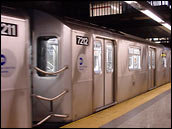

 |
During the Nor’easter storm of December 1992, flooding and strong winds hit the northeastern U.S. with a vengeance causing an almost complete shut down of New York’s subway system. The storm provided a “wake up call” to the city that their public transportation system was vulnerable to severe weather events. Because of the growing challenges caused by climate changes and the threat of global warming, scientists and policymakers all over the United States have joined forces to participate in the United States National Assessment on the Potential Consequences of Climate Variability and Change, or the “National Assessment” for short. The National Assessment presently consists of sixteen ongoing regional projects. For each of the regional studies, teams of scientists, resource planners and other stakeholders assemble to assess their region’s most critical vulnerabilities in areas such as agricultural productivity, coastal areas, water resources, forests, and human health. In addition to looking at potential impacts, the teams also identified strategies that can be used to adapt and respond to climate changes. “The goal of the assessment is to provide the information for communities as well as activities to prepare and adapt to the changes in climate that are starting to emerge,” says Michael MacCracken, who heads the national office helping to coordinate the regional and national assessment teams. The research activities being conducted by the National Assessment teams in the Metropolitan East Coast and the Great Plains region provide good examples of how information is helping the United States prepare for future climate changes. The data used in this study are available in one or more of NASA's Earth Science Data Centers. |
 New York City’s subway system was partially shut down by a major winter storm in 1992. Future global warming will raise sea levels, and may increase the frequency of violent storms, threatening New York and other major cities. (Photo courtesy David Pirmann, New York City Subway Resources) |